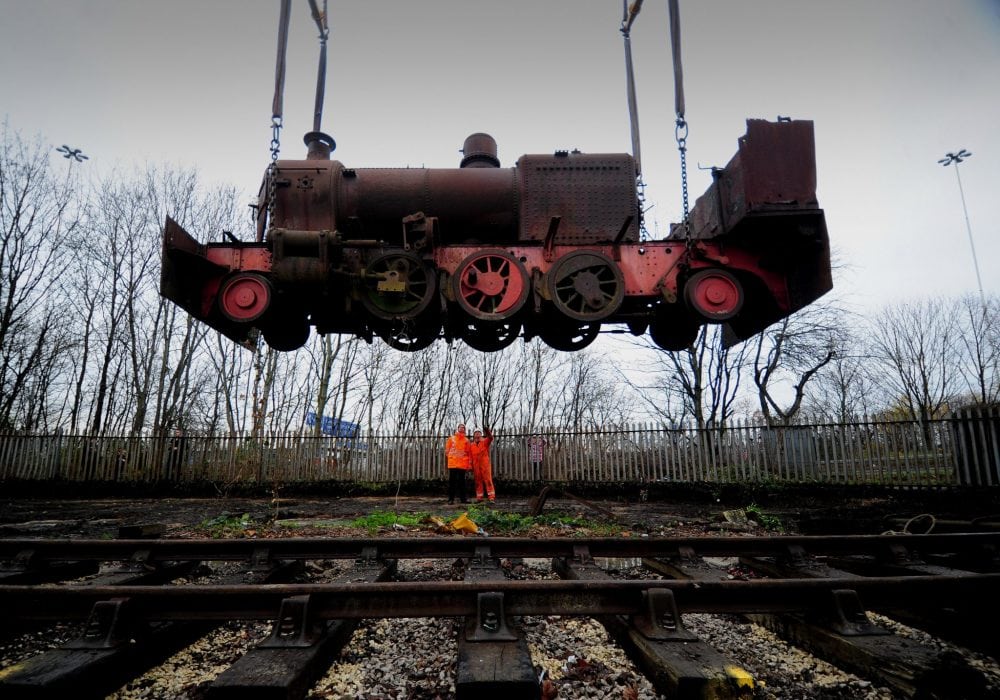
VOLUNTEERS celebrated a moment which had been years in the making as an historic locomotive finished the last leg of its journey from a sugar mill in Trinidad to its permanent home at the world’s oldest working railway. See Ross Parry Story RPYRAILWAY; Although the rare Picton model has been in the care of Middleton Railway Trust for more than a decade, it has been awaiting much needed conservation work and a proper shelter in which it can be preserved. The team at Middleton Railway record the moment that Picton is lowered on to its new piece of track. Picture: Simon Hulme. Crucial support from the Heritage Lottery Fund was secured back in 2013 in the shape of a £70,650 grant to buy and conserve two locomotives in the David Monckton collection.
A historic locomotive has finally made the last leg of its cross-country journey from a sugar mill in Trinidad to its new permanent home at the world’s oldest working railway.
The rare Picton model train – which has been described as ‘technologically better’ than the iconic Flying Scotsman – has finally had much-needed conservation work completed and a proper shelter in which it can be preserved.
The 1927 train was a batch of three vehicles before ending up in a sugar mill in Trinidad before eventually being discovered by former Middleton Railway Trust chairman, David Monckton.
The train has been in the care of Middleton Railway trust in Leeds, West Yorks, for more than a decade and crucial support of £70,650 was granted by the Heritage Lottery Fund in 2013 to buy and conserve to locomotives from the David Monckton collection.
However, it was only on Monday (19 December) that the Picton could finally be moved onto its new section of track with the help of a 200-tonne crane.
Middleton Railway Trust vice president Ian Smith described the skilful lifting required to ensure the safe movement of the train.
He said: “When it was fully operational, Picton would have weighed 52 tonnes and it is 10ft wide, which means it’s far too wide to run on any railway in this country.
“The intention was always that we would create what’s called the Picton Shed. What we’ve done today is move the engine from where it’s been stored for the past 15 years and onto a new piece of track.
“Next we start building a shelter around it. Visitors will still able to see it but it will be covered up and sheltered from the weather.”
Picton forms an important part of Yorkshire’s locomotive building story – as it was built less than a mile away from the where is currently stored.
It was part of a range developed specifically for export and is very rare in the UK as a result.
One of a batch of three, it ended in Trinidad; however, David Monckton recognised its significance and arranged for this particular locomotive – the best of the batch – to be brought back to Middleton Railway.
Mr Smith added: “We’ve all heard of the Flying Scotsman.
“When that was built in 1923 it was supposedly state-of-the-art, but Picton was actually technologically better.”